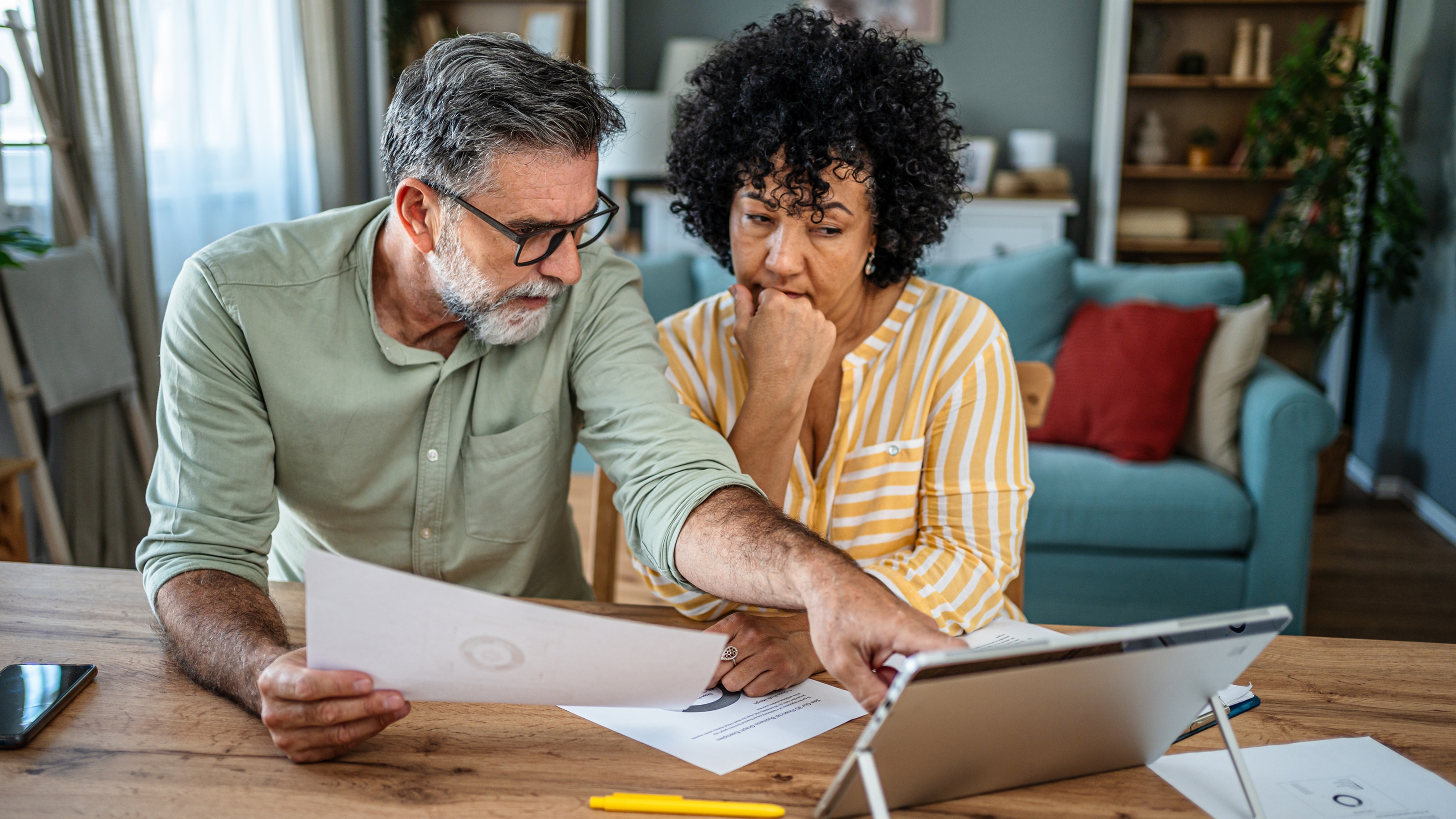5 Trends in High-Net-Worth Philanthropy
Wealthy families and organizations are giving more to charity but also targeting funding to fewer grants in their efforts to create bigger impacts.


Philanthropy is an increasingly important part of people’s financial pictures. It allows individuals to link their personal goals and values to the way they save, invest and spend their money. For “high-net-worth” families, it’s an opportunity to unify a shared legacy for generations to come. Let’s look at some recent trends in high-net-worth philanthropy.
We recently examined the giving activities of nearly 1,000 private foundations with assets between $1 million and $500 million over the past two years to understand how wealthy families are pursuing their philanthropy.
While some of the highs and lows we experienced in that period may feel like incomparable moments in time, they’ve had a lasting impact that sets the stage for future giving.
From just $107.88 $24.99 for Kiplinger Personal Finance
Become a smarter, better informed investor. Subscribe from just $107.88 $24.99, plus get up to 4 Special Issues

Sign up for Kiplinger’s Free Newsletters
Profit and prosper with the best of expert advice on investing, taxes, retirement, personal finance and more - straight to your e-mail.
Profit and prosper with the best of expert advice - straight to your e-mail.
These top five findings provide a benchmark for established and aspiring philanthropists.
1. Philanthropists Are Giving Away More.
Supported by double-digit endowment growth and the residual effects of 2020, private foundations increased their giving in 2021. The foundations we analyzed gave away a total of $689 million in 2021, an increase of $40 million over the prior year, and an average of $727,129 per foundation.
2. Philanthropy Is Becoming More Concentrated.
At the same time, these foundations funded 500 fewer grants in 2021, indicating a shift from getting aid to as many recipients as possible during the intense and rapidly changing needs of 2020 to increased targeting of their dollars in an effort to create greater impact.
3. Foundations Are Going Above and Beyond More Often.
Our data indicates that a large number of foundations regularly give more than the annual mandatory distribution requirement of 5%, signaling a strong commitment to go above and beyond for charitable causes.
In 2021, the foundations in our study disbursed an average of 7.2% of their assets, with smaller foundations (those with assets between $1 million and $10 million) giving away 8.9% of their assets.
4. Prepandemic Norms Are Reemerging.
In addition to fewer, more concentrated grants, there is other evidence that philanthropists are starting to revert to prepandemic giving patterns.
First, there was a notable decrease in grants to human services and public/societal benefit organizations, which both saw sharp increases during 2020 as donors focused on the public health emergency and tackling systemic racial inequities.
Second, we observed less use of general-purpose grants, which were especially useful during the pandemic, and more specific-purpose grants that have long been favored by major donors, as they allow them to ensure their gifts align with their mission.
Third, during the recovery of 2021, there was a 64% decrease in grants to individuals, which were used abundantly in 2020 to get aid quickly and directly to the people and places that needed it most.
5. Foundation Size Influences Makeup of Endowment Portfolio.
Smaller foundations have the highest allocation to equities, ending 2021 with 61.5% exposure. They also maintain the highest level of cash at 12.4%, as the increased liquidity enables higher levels of giving.
Conversely, larger foundations have more complex portfolios. They have an average allocation of 23.5% to alternative investments, such as private equity and hedge funds, which is nearly five times the exposure of smaller foundations, and 8.4% of their assets are in a unique mix of life insurance, program-related investments, closely held stock, receivables, annuities, inventory and other nontraditional assets.
Learn more in the complete 2022 Report of Private Philanthropy.
Profit and prosper with the best of Kiplinger's advice on investing, taxes, retirement, personal finance and much more. Delivered daily. Enter your email in the box and click Sign Me Up.

Hannah Shaw Grove is the chief marketing officer of Foundation Source, founder of "Private Wealth" magazine and author of 11 data-based books and hundreds of reports and articles on topics relating to the creation, management, disposition and transfer of wealth. Hannah has previously been the chief marketing officer at Apex Clearing, iCapital Network and Merrill Lynch Investment Managers and is a cum laude graduate of Harvard University. She holds the FINRA Series 6, 7, 24, 26 and 63 licenses.
-
 How to Plan a Microvacation That Actually Feels Restful
How to Plan a Microvacation That Actually Feels RestfulHow a simple long weekend can boost your mood, reduce stress and make winter feel shorter.
-
 We're retired and fight more than ever. Should we take a break?
We're retired and fight more than ever. Should we take a break?Can taking a break save a marriage? We asked professional relationship therapists for advice.
-
 Turning 59½: 5 Planning Moves Most Pre-Retirees Overlook
Turning 59½: 5 Planning Moves Most Pre-Retirees OverlookAge 59½ isn't just when you can access your retirement savings tax-free. It also signals the start of retirement planning opportunities you shouldn't miss.
-
 Turning 59½: 5 Planning Moves Most Pre-Retirees Overlook
Turning 59½: 5 Planning Moves Most Pre-Retirees OverlookAge 59½ isn't just when you can access your retirement savings tax-free. It also signals the start of retirement planning opportunities you shouldn't miss.
-
 Are Your Retirement Numbers Not Looking Good? A Financial Adviser Runs Through Your Options
Are Your Retirement Numbers Not Looking Good? A Financial Adviser Runs Through Your OptionsIf you're worried about a shortfall between your income and expenses in retirement, you're not alone. But there are ways you can make up the difference.
-
 How to Make the Most of These 2 Tax Breaks ASAP (They Have Expiration Dates)
How to Make the Most of These 2 Tax Breaks ASAP (They Have Expiration Dates)Taxpayers can strategically use these temporary tax opportunities in particular to lock in long-term tax savings. Here's how.
-
 What Changed on January 1: Check Out These Opportunities Created by the New Tax Law
What Changed on January 1: Check Out These Opportunities Created by the New Tax LawA deep dive into the One Big Beautiful Bill Act (OBBBA) reveals key opportunities in 2026 and beyond.
-
 Beat the Money Blues With This Easy Financial Check-In to Get 2026 Off to a Good Start
Beat the Money Blues With This Easy Financial Check-In to Get 2026 Off to a Good StartAs 2026 takes off, half of Americans are worried about the cost of everyday goods. A simple budget can help you beat the money blues and reach long-term goals.
-
 Do Self-Storage REITs Deserve Space in Your Portfolio? It's a Yes From This Investment Adviser
Do Self-Storage REITs Deserve Space in Your Portfolio? It's a Yes From This Investment AdviserSelf-storage is an overlooked area of the real estate market, even though demand is strong. Investors can get in on the action through a REIT.
-
 4 Simple Money Targets to Aim for in 2026 (And How to Hit Them), From a Financial Planner
4 Simple Money Targets to Aim for in 2026 (And How to Hit Them), From a Financial PlannerWhile January is the perfect time to strengthen your financial well-being, you're more likely to succeed if you set realistic goals and work with a partner.
-
 Estate Planning Isn't Just for the Ultra-Wealthy
Estate Planning Isn't Just for the Ultra-WealthyIf you've acquired assets over time, even just a home and some savings, you have an estate. That means you need a plan for that estate for your beneficiaries.